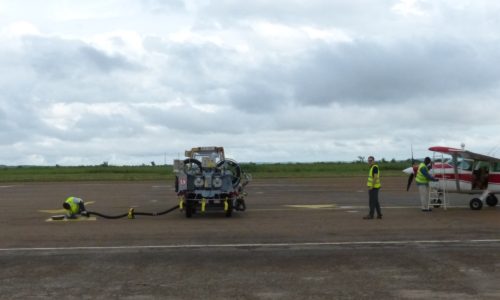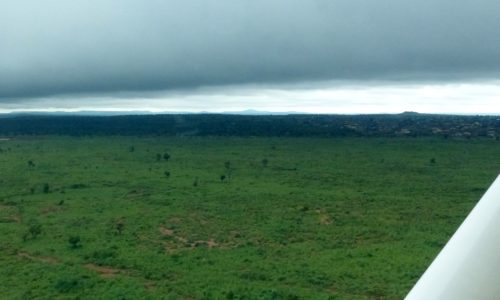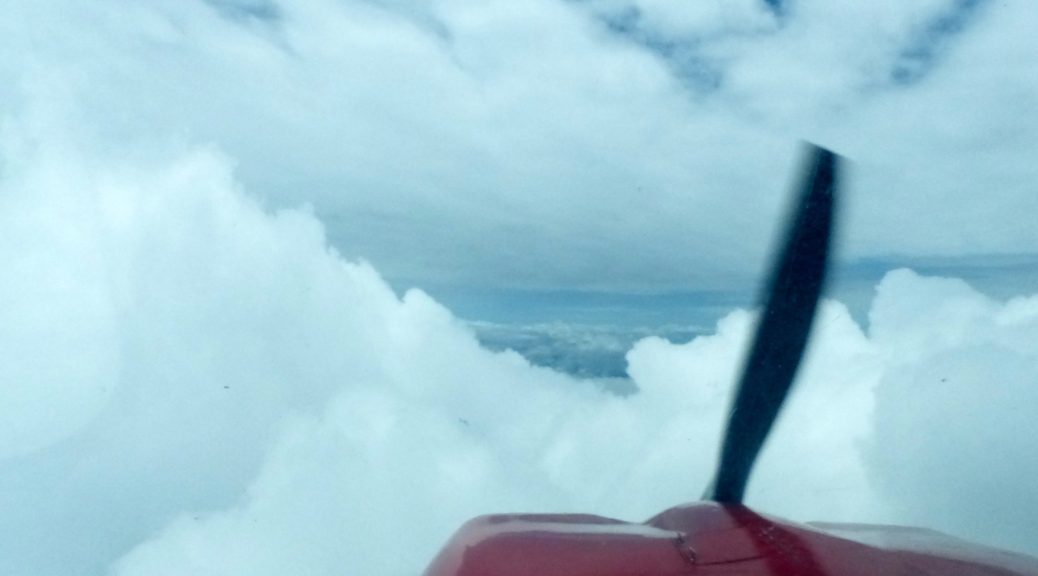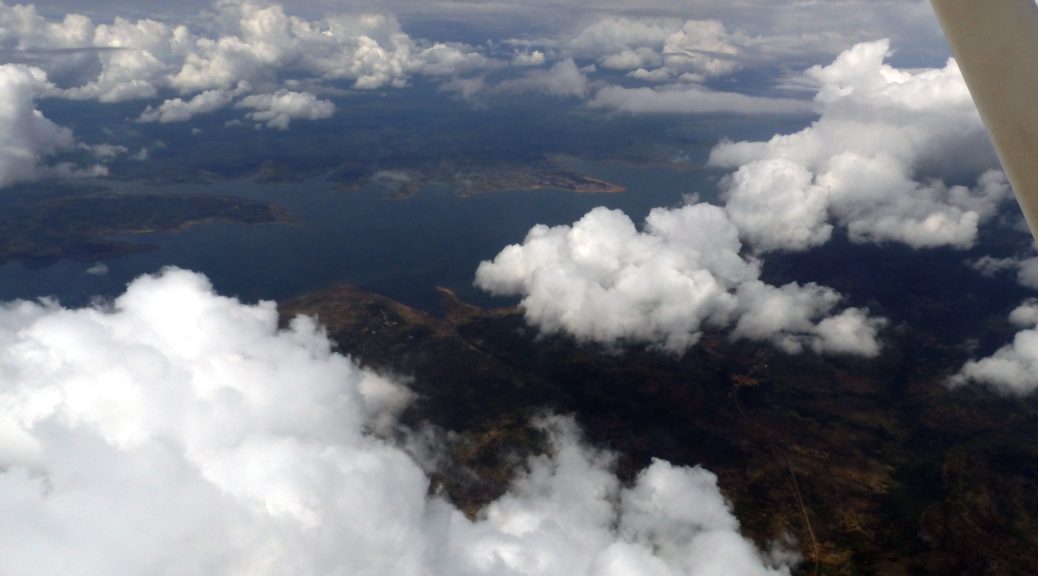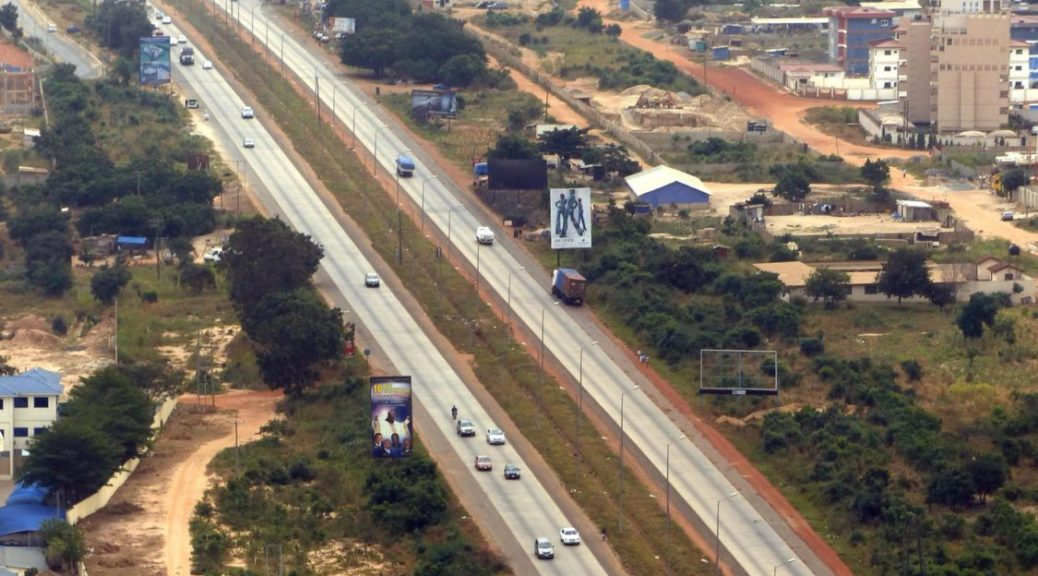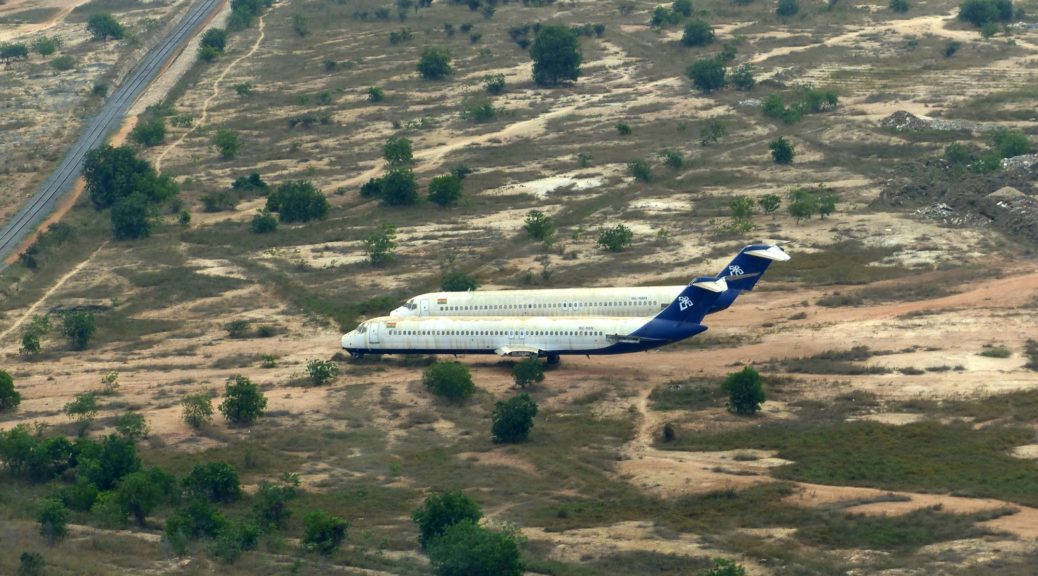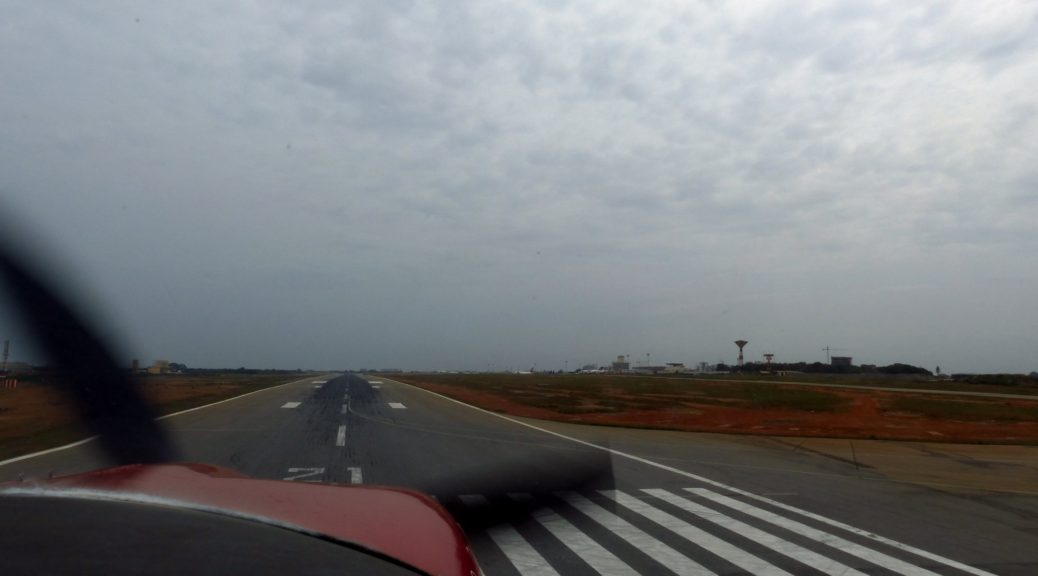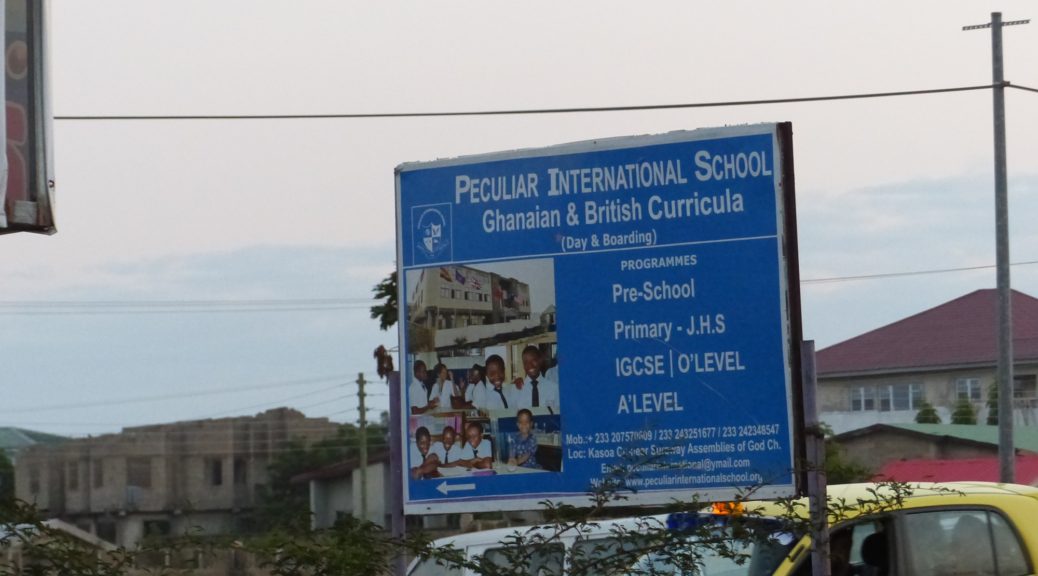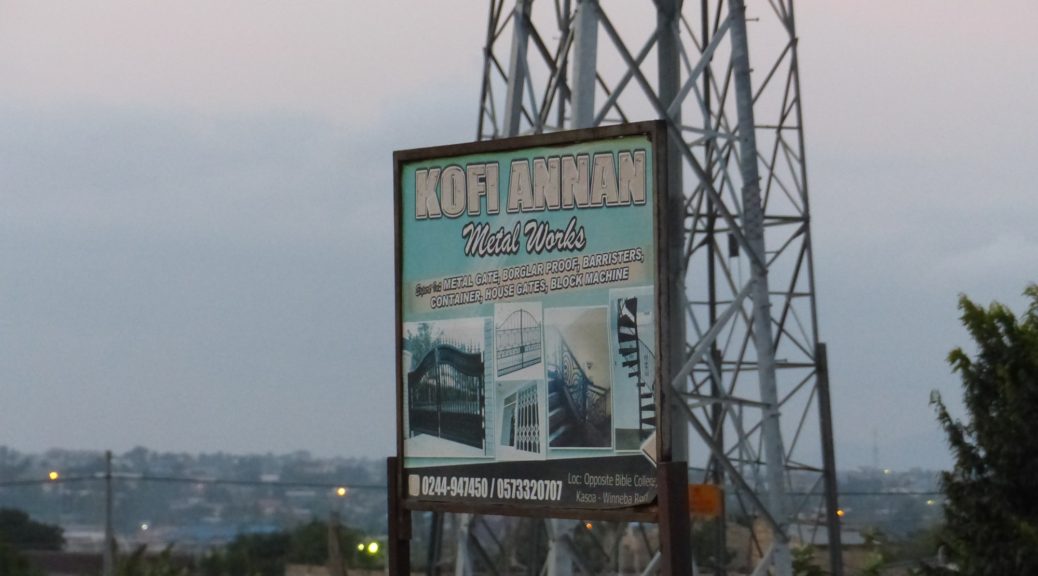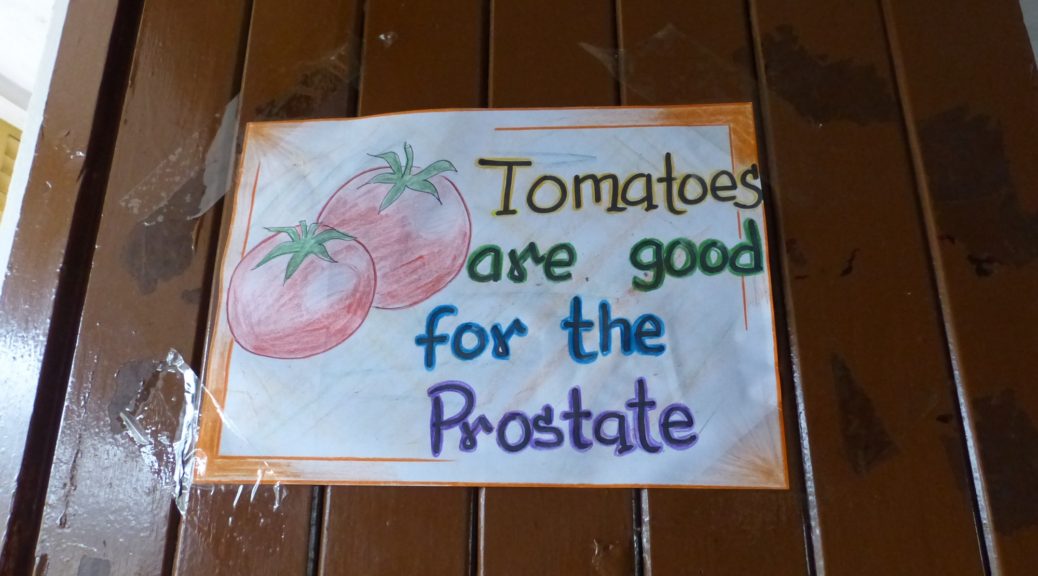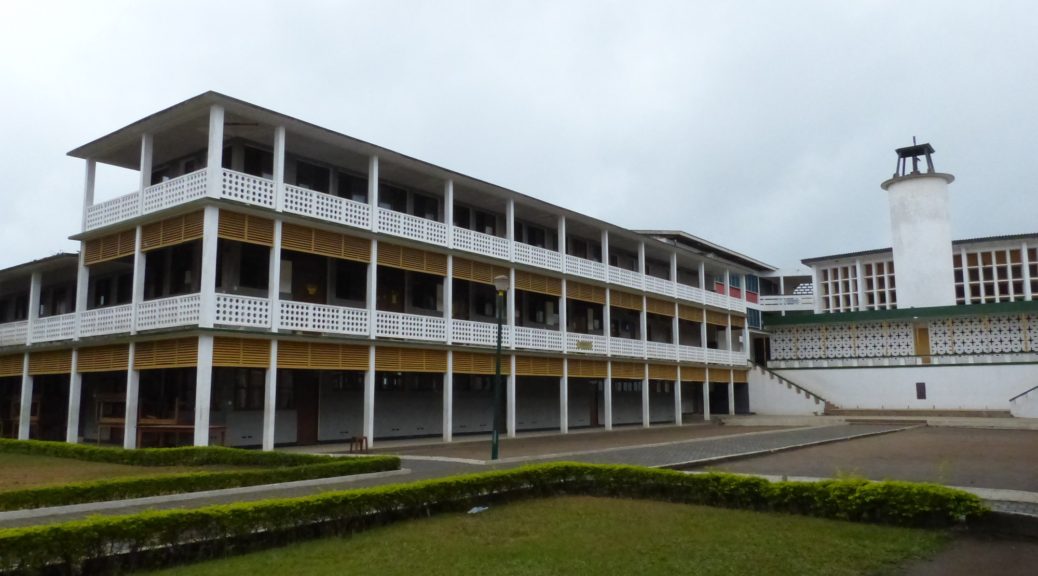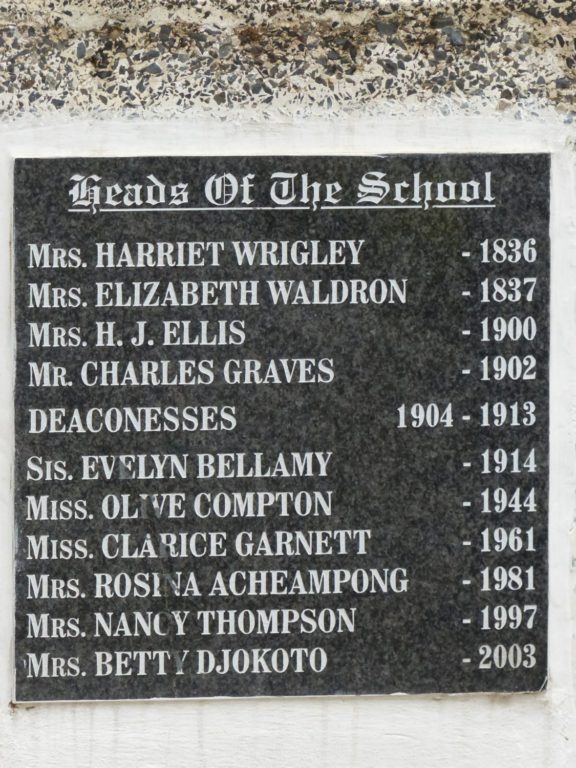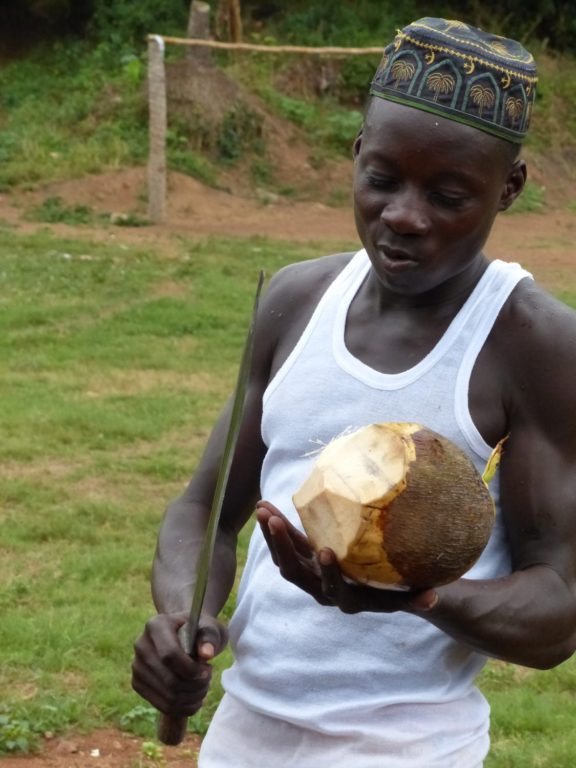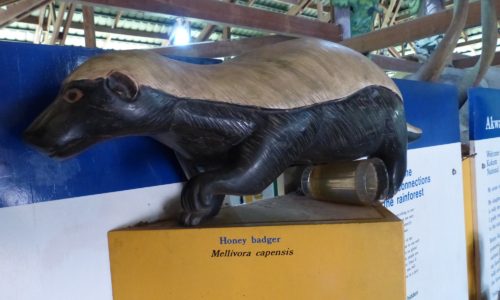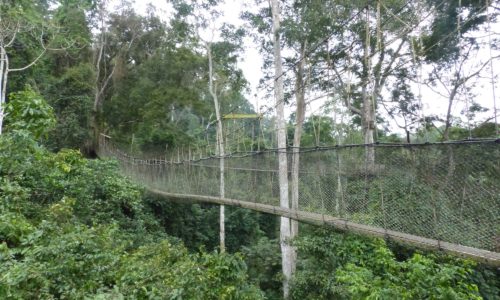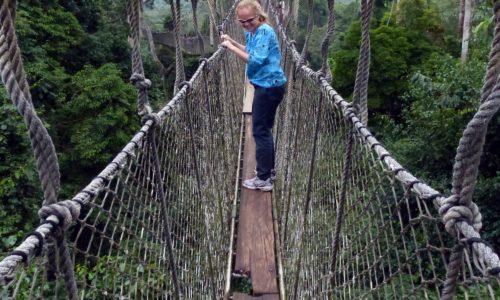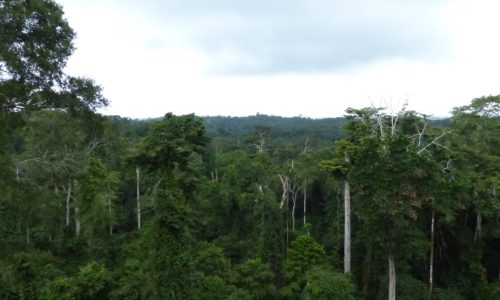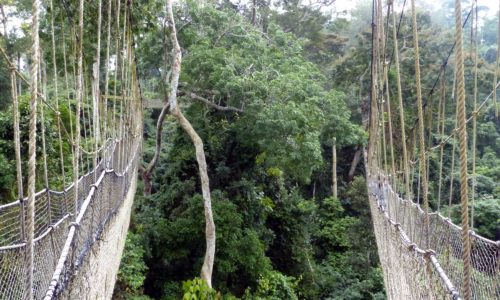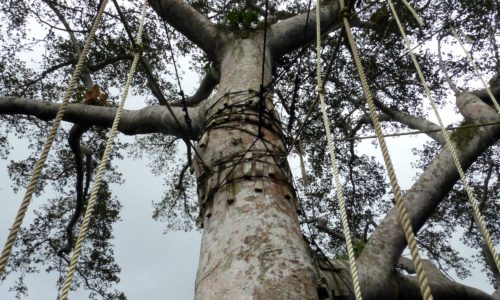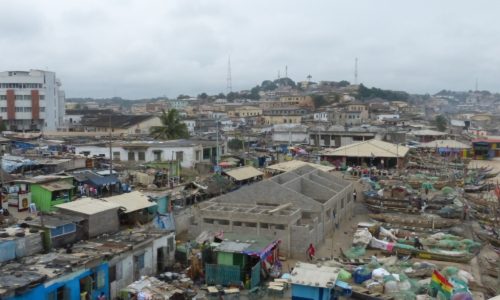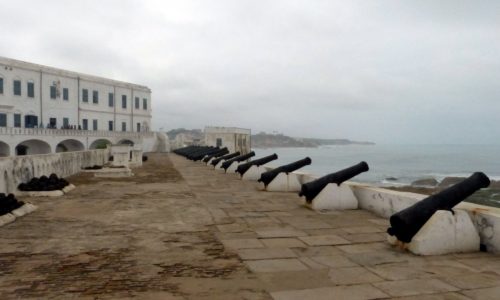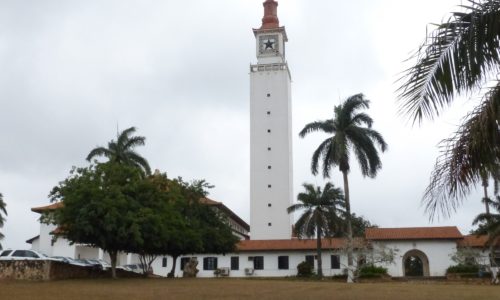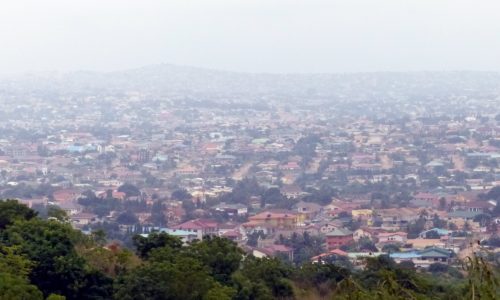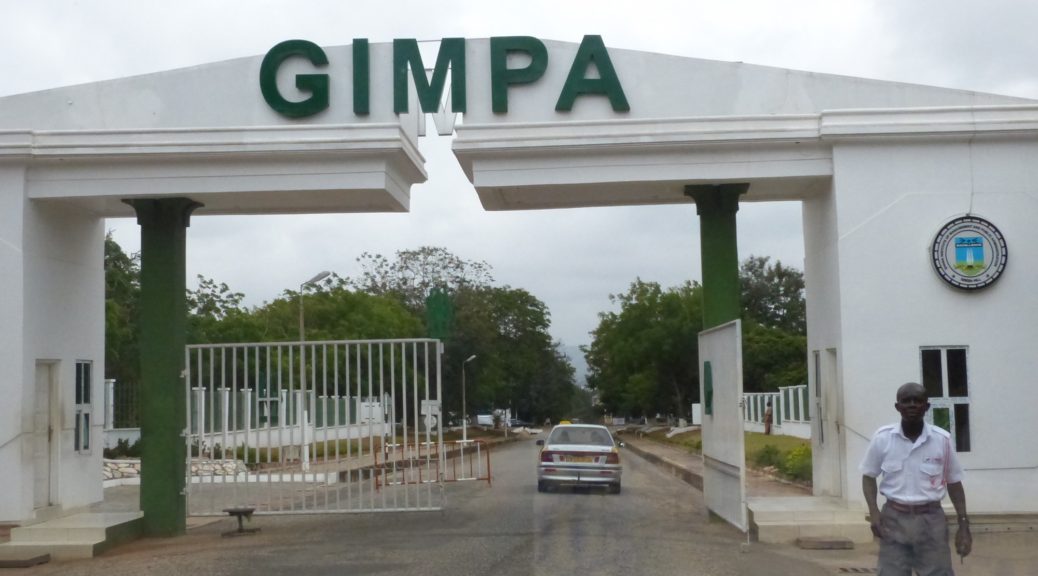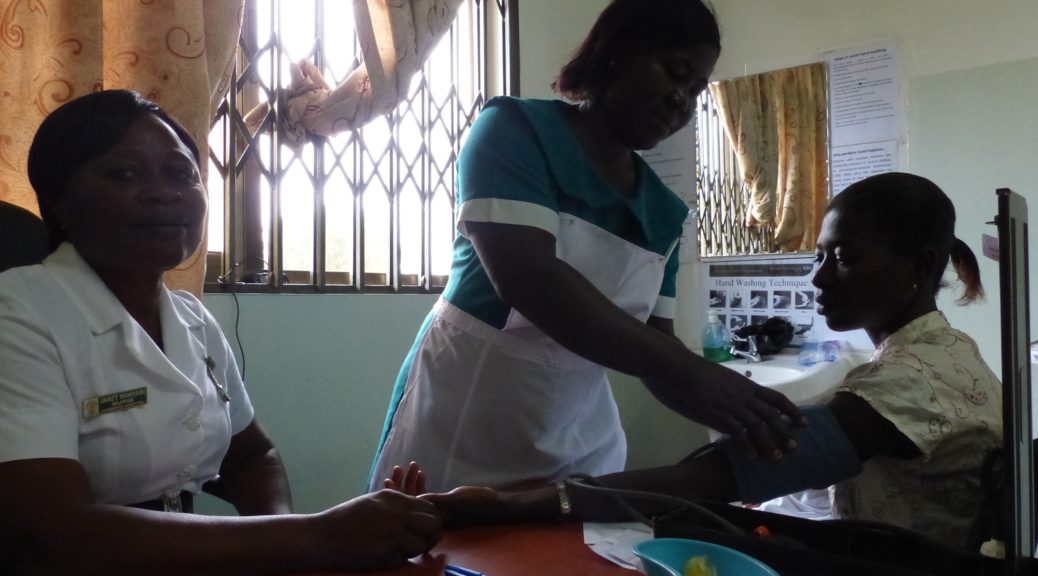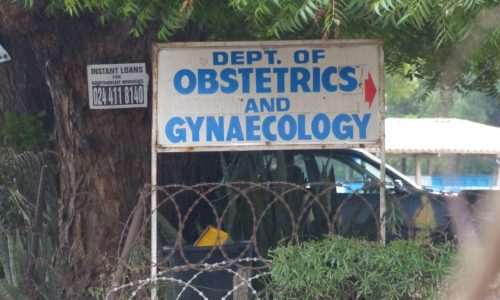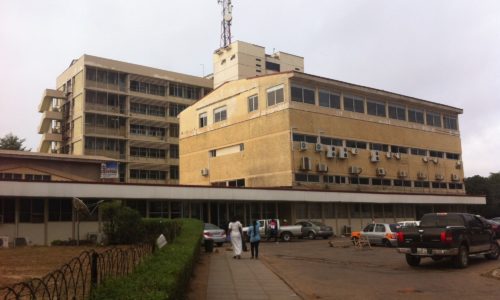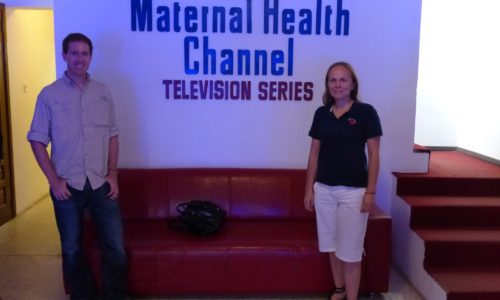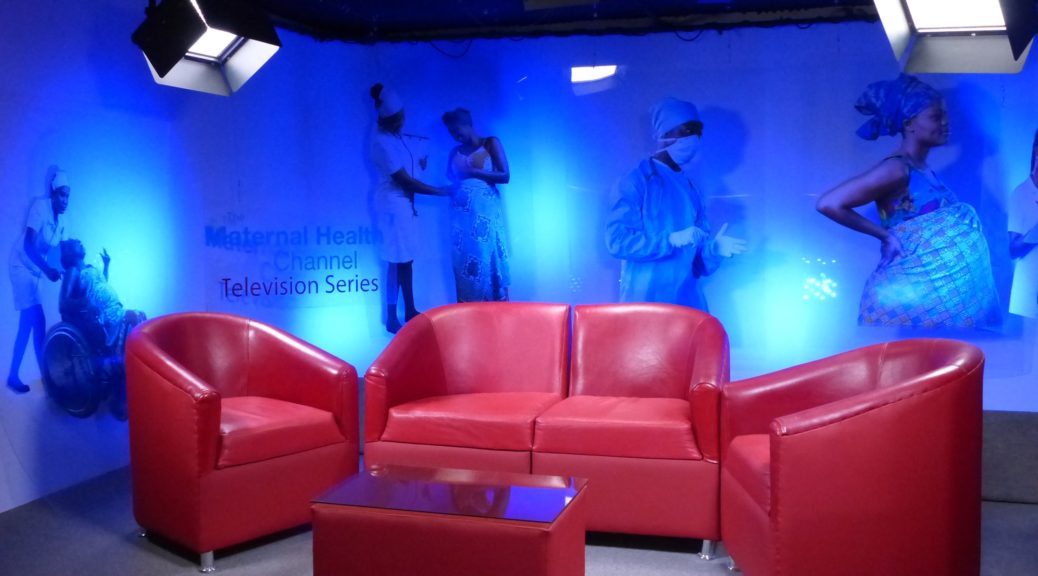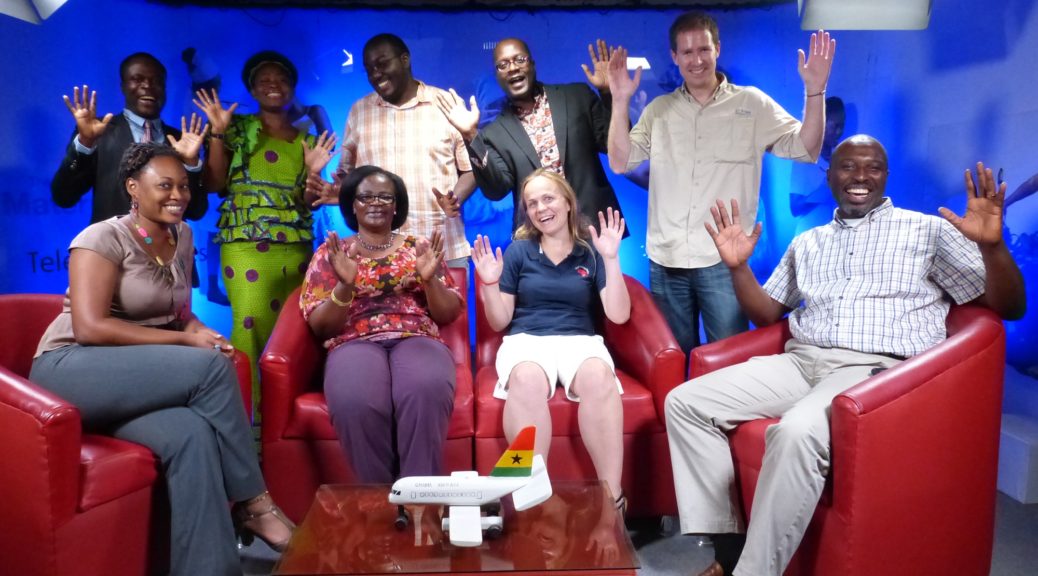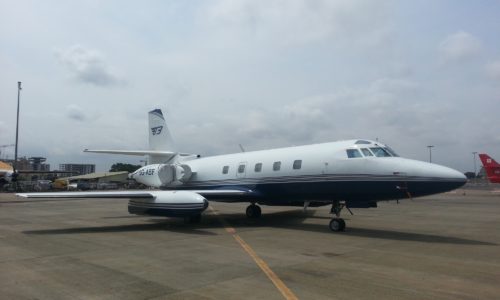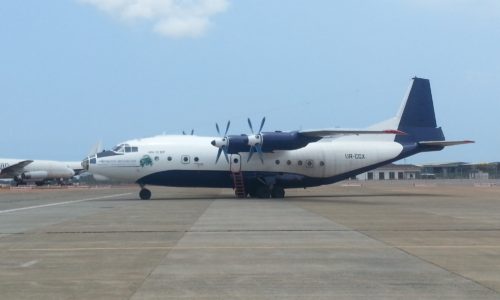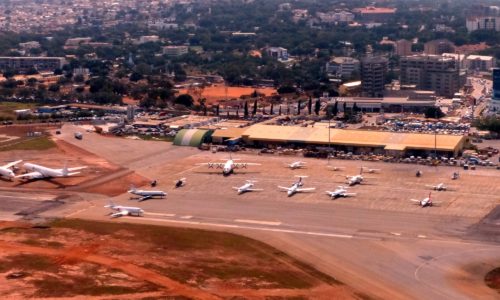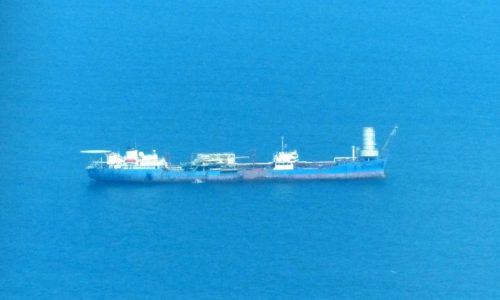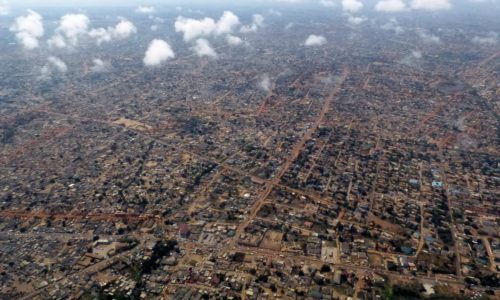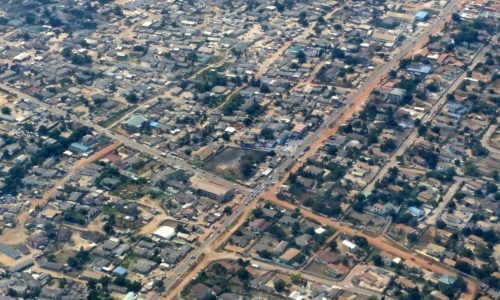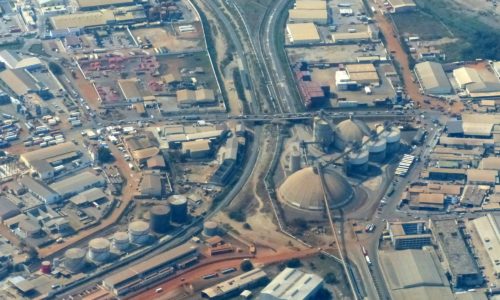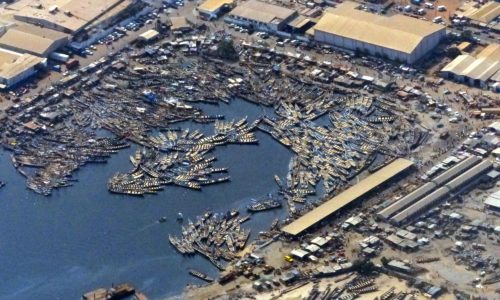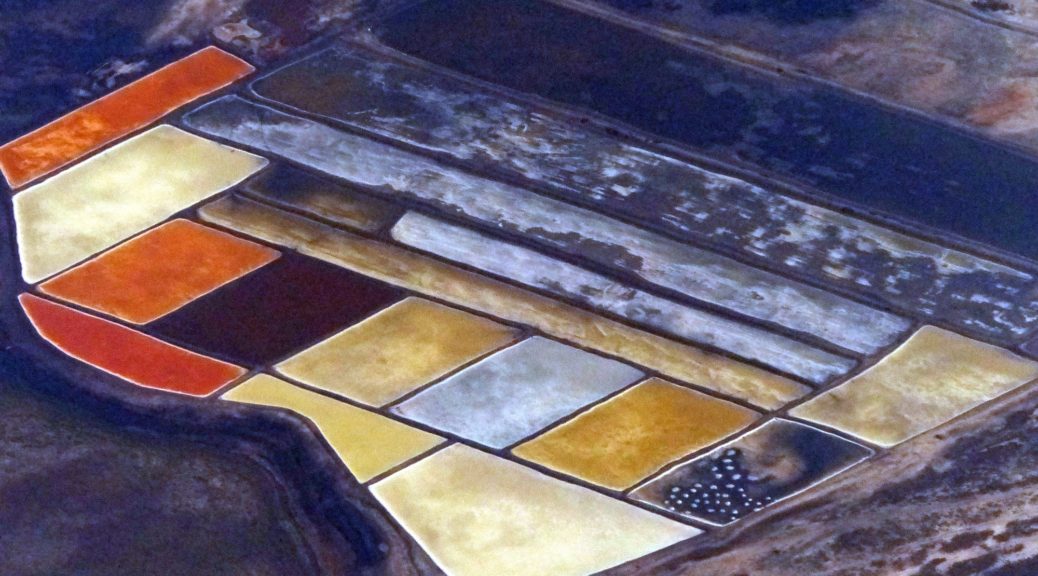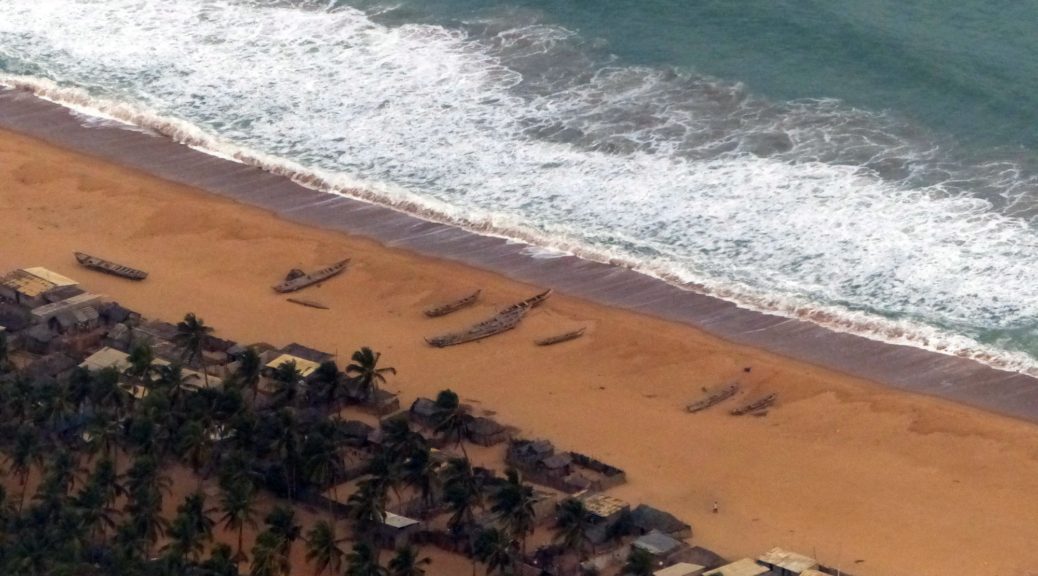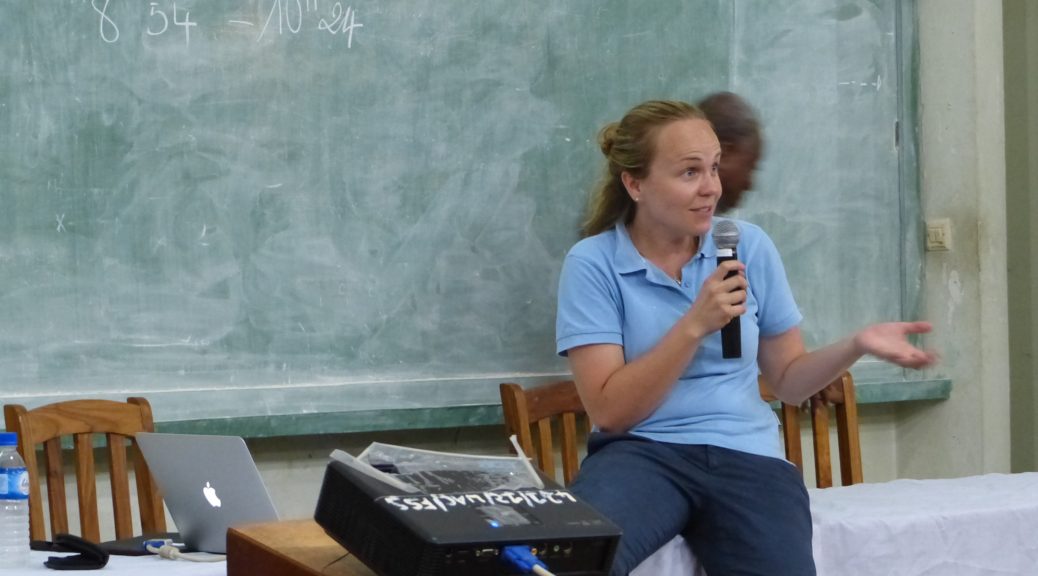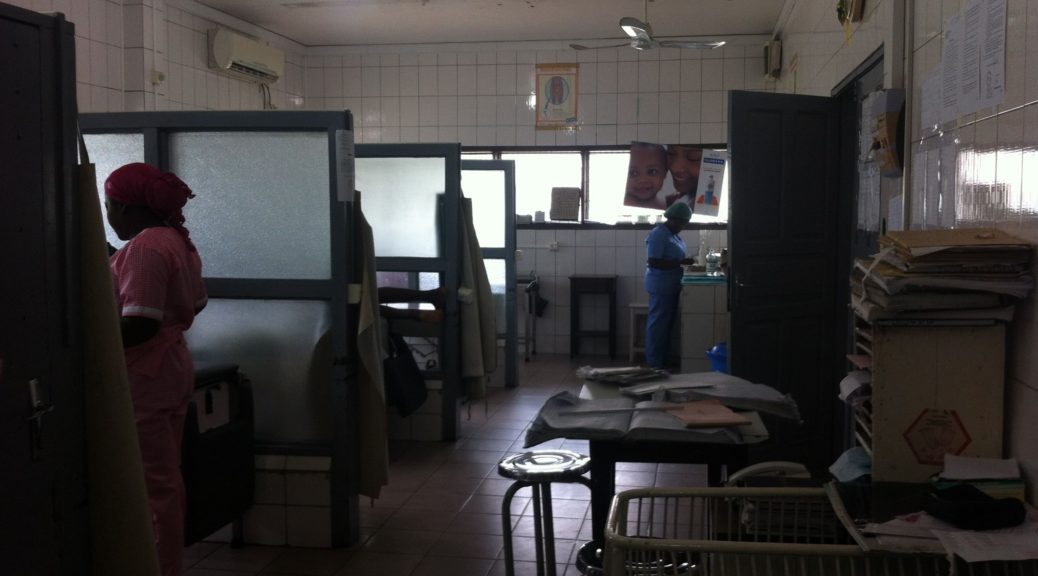Africa – Ghana and Benin
Leaving Bobo Dioulasso airport was just as easy as arriving at it. Our hosts drove us out, arriving a little after 9 in the morning, and we very swiftly passed through security in the once again empty private terminal. While Sophia’s medical friends waited in the lounge, we headed for the tower for the formalities. After a few fruitless minutes trying to gain entry into the locked building, someone pointed out that there was a new tower a few hundred meters further up, just out of site around the corner of the old building. Off we went, and found this one much easier to gain access to. The staff were not quite as quick and efficient as the policeman at the terminal and it took almost an hour before the fees were paid and the flight plan filed. This carried out, it was time to fuel up; we had to taxi across the apron to the fueling point. The Jet A truck is simply a large pump that connects to an underground fuel system, and pumps said fuel into the aircraft.
Fully fueled, it was time to set off on the 460 nautical mile flight to Accra, on the southern coast of Ghana. The first leg of our IFR flight plan took us on a direct heading for Tamale, the main city in the north of Ghana. After this, the filed route had us turning south directly for Accra. ATC in Burkina Faso handed us over to Accra North at the border, and after a while we managed to make contact; as usual, flying at low level made it difficult to establish radio communications when far away.

Once we did get in touch, and Accra North established our position, they asked us if we could accept a routing of “Direct to Accra”. This was a direct leg to our destination of a little over 300 nautical miles, which would save a good twenty minutes of flying time; great! For the next few hours we cruised along directly for Accra, finally being given radar vectors to fly an ILS approach down through the broken clouds. As usual we became visual with the airport far out on the approach and were cleared in for a smooth landing. A “follow me” car led us down to the GA parking at the far end of the airport, and our handlers from Aerogem Aviation arrived to meet us as we shut down.
For some reason Aerogem had decided that the best way to transport us would be with a tiny car already packed with several of their staff. We just managed to squeeze ourselves, and our baggage, into the vehicle and rode in cramped fashion to the terminal. We made it through the building very quickly, with no-one terribly interested in examining our paperwork or luggage, and settled in outside arrivals to wait for our host, the mother of a colleague of Sophia’s in the UK.
After a while she arrived, and we piled into her black SUV. The drive to her house took about 20 minutes, and ended up in a fairly new but evidently wealthy neighbourhood. The houses were large, and highly fenced with security guards at the gates of each. Our hosts, a doctor and his wife, ran a clinic in a poorer part of town and did well enough out of the business to have sent all their children to private schools and foreign universities, as well as building a lovely home in a good part of town; healthcare is evidently a lucrative business in Ghana when managed well.
We sat and enjoyed fresh fruit juice on the patio, and talked about the journey so far. Mrs Q and Sophia swapped stories about Barbara, the daughter and mutual friend. In the background our conversation was accompanied by a loud soundtrack of modern music; apparently from a sports complex nearby that played it from morning until late at night. As I made my way to bed for an early night after the chef had served a quite excellent chicken dinner, I was thankful that my room was on the far side of the house!
Sunday had been billed as a rest day. Nonetheless, we awoke before seven to get ready for a day out. Quincy, Mrs Q’s brother, was coming to take us out for the day to do some sightseeing along the coast. The four of us (Mrs Q was coming along) set out in his SUV, which he had apparently driven to Ghana from Nigeria when he moved back less than a year ago, through Togo and Benin. The roads out of the city were paved, albeit occupied by drivers who verged on the lunatic. This section of the coast, west of the city of Accra, had been occupied by various colonial powers over the 400 years or so preceding independence. We passed one imposing castle perched high above the shoreline, apparently a Portuguese relic.
Our first stop was at the private girl’s school where Sophia’s friend had been educated. Term was over, but we were permitted in to have a look around. It was well equipped, and had apparently been operating since the early 1800s, always run by European headmistresses. The school dining room was having funds raised for renovation; we had a look inside, and browsed the nutritional posters lining the walls. “Eat tomatoes for a healthy prostate”, we were advised. Perhaps not the most useful advice at a girl’s school, but maybe worth remembering for later years in marriage.
From here we continued towards Kakum national park. We stopped along the way to buy coconuts from young boys along the roadside, who skillfully hacked them open with machetes, never spilling a drop of the liquid inside. I was far less successful at keeping the liquid where it belonged as I tried to drink from my coconut during the bumpy ride along the poorly maintained road towards the park. On arrival we perused the visitor’s center, waiting on a small rain storm to pass through, before joining the tour guide who took a party of 30 of us up the hill towards the main attraction, the canopy walk.
This walk had been constructed in the 90s by two Canadians, with the help of four locals, and looked like it had not been maintained since. Joking about the slightly tired looking condition, we were reassured by the guide that it was thoroughly checked every morning by the park’s engineers. Quincy had already elected not to join us as he was not a fan of heights, but we managed to persuade Mrs Q to come along. After being gently coaxed across the first bridge by the guide she decided enough was enough, and elected to go no further. We were now some way behind the main group and running to catch up was suggested. Just as Sophia was jogging out ahead telling me “Come on, we’re not going to get in any trouble for it”, her foot disappeared through the walkway as a rotten plank gave way. There was no real danger as a thick, tightly woven rope net ran along inches below it, and once our laughter had died down to a level where we could once again walk we proceeded at a slightly more sedate pace.
From the national park, we started heading back towards town, stopping off at another castle along the way. Cape Coast castle had its origins in structures first constructed here in the 1600s, and gradually built up and fortified over the subsequent centuries. At times it was owned by the Swedish, Danes, Dutch, and finally the British who had possession up until the structure was handed over at independence. As well as being a defensive location, the castle was used extensively for many types of trading, including that of slaves. Several large underground dungeons had been added to the structure for this purpose.
Our first stop on Monday was the clinic owned by Dr and Mrs Q. Mrs Q drove us there, taking a meandering route through the main university in Accra. We were treated to an extensive driving tour of the campus, the major part of which sits on a hill overlooking the city, as well as a look at the adjacent business school where Mrs Q had returned to study after her children had moved away. After arrival at the clinic we were treated to a tour; the facility was much closer to the kind of place that we are used to in the developed world, clean and quiet with no over-crowding. We also toured the next door building site where a large extension was being constructed. Health and safety procedures were a little different to what I am used to on my construction sites back in the US!
From the clinic, Mrs Quarshie and I dropped Sophia at a local hospital where she had arranged to meet a member of staff and spend a few hours. Having no internet connection at the house, I was dropped off at an internet cafe a few minutes walk away and spend a couple of hours catching up on plans for the following flights and so on. A Westlife CD was playing, loudly, on repeat and half of the clientele were singing along.
Sophia had an early start Tuesday to head down to the sea front, a long drive from our accommodation, and spend the morning visiting the main teaching hospital. Mrs Q and I would meet her in the early afternoon at the studio of the Maternal Health Channel, a group who produced a weekly prime time television show in Ghana dealing with, unsurprisingly, maternal health. The streets in Accra are not well signposted, and GPS navigation does not seem to have taken off yet. We spent quite some time driving around the general area that we thought the studio was in, before the 7th or 8th person we asked was able to tell us where the correct street was. After a fruitless ten minutes trying to find our contact at the studio, we were informed that this was actually the wrong studio, and the one we wanted (“Creative Storm”) was further down the road.
We arrived at the same time as Sophia’s taxi, which had apparently had similar trouble finding the place. One of the show’s staff was outside the gates looking out for us, as we were by now a little late. We were shown straight up to the main meeting room where we were introduced to the majority of the show’s production team. Apparently the show had proven to be a great success since launch, and now had weekly prime time slots on two different major channels in Ghana. A typical episode traced the story of a woman, and revealed and discussed the challenges she faced such as transport to hospital, lack of available care, and even lack of blood for transfusions; one husband had stopped to buy blood during an hours long drive to the clinic, knowing he’d need it, only to break down when told that un-refrigerated for so long it was no longer of any use.
We spent quite some time discussing our respective projects/shows, and sharing photographs of the trip. They were very keen to start promoting the flight through their social media channels, which was great for us! Discussions completed we went downstairs to the studio for some photographs before departing back to Mrs Q’s, and our final evening before heading to Benin.

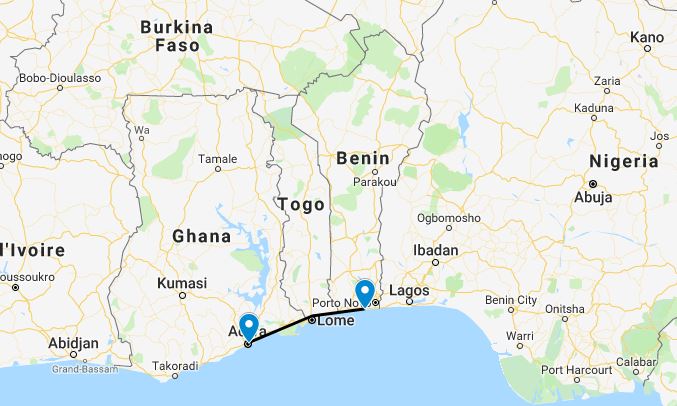
The flight to Benin, at 160 nautical miles, would not be a long one. The required permit arrived in the nick of time, mid-morning of the day that we were planning to depart. Apparently things had been finally worked out by the professor that we were going to meet paying a visit to the head of Cotonou airport! Permit in hand, we scrambled to get to the airport and depart. Our handling agents, Aerogem, met us at the departures door but then rather disappointingly abandoned us before passport control, promising to meet us at the gate. We muddled our way through immigration and security, constantly explaining our lack of a boarding pass to officials as we went, and eventually found our way to Gate 1 as instructed. Nobody there knew anything about Aerogem, but we eventually found that our agent was in fact waiting outside peering in through the door at the end of the boarding corridor. The transfer through the terminal is usually where the agent is the most useful, so it was a bit strange that they made themselves scarce!
Once again the transport airside was a small hatchback crammed full of Aerogem staff for no good reason. My luggage balanced on my lap, I was glad to extricate myself at the other end and start preparing the aircraft for departure. Aerogem announced, rather unhelpfully, that they would not accept local currency or credit cards for payment; US dollars, in cash, only. I still haven’t worked out how companies based in these countries can refuse the nations own legal tender, but no doubt regulations are very different in this part of the world to what we’re used to. We arranged that payment would be by bank transfer, but they then announced that they could not tell us what the amount would be. I pointed out that if I had a big bunch of dollars, they would be obliged to tell me the amount as they claimed to be able to take payment now; but apparently if we did not have cash in hand the office would not prepare the invoice until later. Any kind of logic was evidently wasted here, so we gave up and got ready for departure.
Parked near the back of the apron, we weaved between private jets and other interesting resident aircraft before making it to the taxiway and heading down to the other end of the runway for departure. Departure took us out over the coast, with a left turn to proceed along the coast line towards Togo. The minimum airway altitude on this route was around 13,000ft, but this was higher than we were allowed to fly. We were limited by our engine certification to 12,500ft, and technically by our lack of supplementary oxygen to 10,000ft. This was no problem, however, as once we were put into contact with Togo shortly after takeoff they were quick to give us a clearance at 9,000ft to pass through their airspace and into Benin.
We passed directly overhead Lome’s international airport, and along the shores of Lake Togo, before being handed off to Benin. We were soon cleared to start our descent through broken cloud layers towards the airport. The city was noticeably less developed than Accra had been, and the airport much smaller and quieter; from our point of view, this was just what we liked! I requested and was granted a visual approach, as we were coming in from the opposite direction to the main landing runway and it would have taken forever to fly all the way out to start the approach and come back in again. We landed and were directed to park in bay 18, the other end of the long apron from the terminal. Arriving at bay 18, we found it occupied by a Swiss registered Falcon jet. We reported this and were granted space 19 instead. “Uh, tower, there’s a Cessna Caravan in that one”. “Ah – well, can you fit in between the bays? You’re very small.” We obliged, and took our time securing the aircraft and preparing baggage. It was nice not to be faced with a hoard of people on arrival and be left to just get on with it!
Baggage collected and aircraft locked and covered up, we set about getting to the terminal. Given the absence of people or vehicles, we set off on foot. Between us and the terminal was the military apron; in fact, just a different section of the main apron marked out by a painted yellow line. For want of a better idea, we wandered across it. A couple of soldiers waved to us as they passed in the other direction, before a high ranking officer in dress uniform strode out of the hangar towards us and inquired as to who we were. We explained that we’d come in the Cessna, and he was all smiles, welcoming us to Benin and wishing us a pleasant stay. Nice people here! We stopped into the airport office to ask about the formalities, and established that they didn’t need anything from us now and that we could take care of everything on our return.
We made it swiftly through immigration and into arrivals, where we were warmly welcomed by our host the Professor and several of his colleagues. They had been waiting for quite a while but were very understanding about the delays in this kind of flying, and took us straight out to the car and on to the university. Our first visit was the head of the medical faculty, where introductions were carried out, and Sophia presented the project to the handful of faculty members present. We were then taken downstairs and through a set of double doors, to be confronted with a large lecture theatre full of medical residents who were apparently expecting a presentation about the project; in French. Excellent. I suddenly felt very lucky to just be the pilot. Sophia did an excellent job, considering that she had just been instructed to perform a surprise lecture, in French, after a long day of flying but we were very relieved to be finished at the university and head to our room at the Novotel for a relaxing dinner in the bar!
The next day Sophia had a bright and early start at the ‘Clinique de gynécologie et d’obstétrique du CNHU de Cotonou, Bénin’. Her teaching program was delivered in French, including the simulated Obstetric hemorrhage with a delivery-suite midwife as the patient.
Click here to read the next part of the story.

